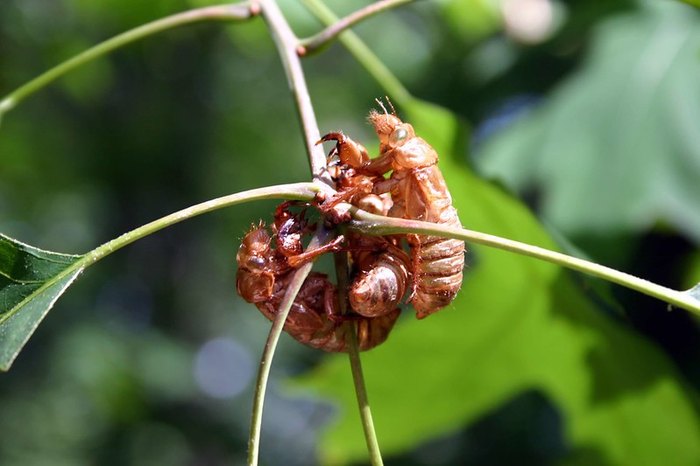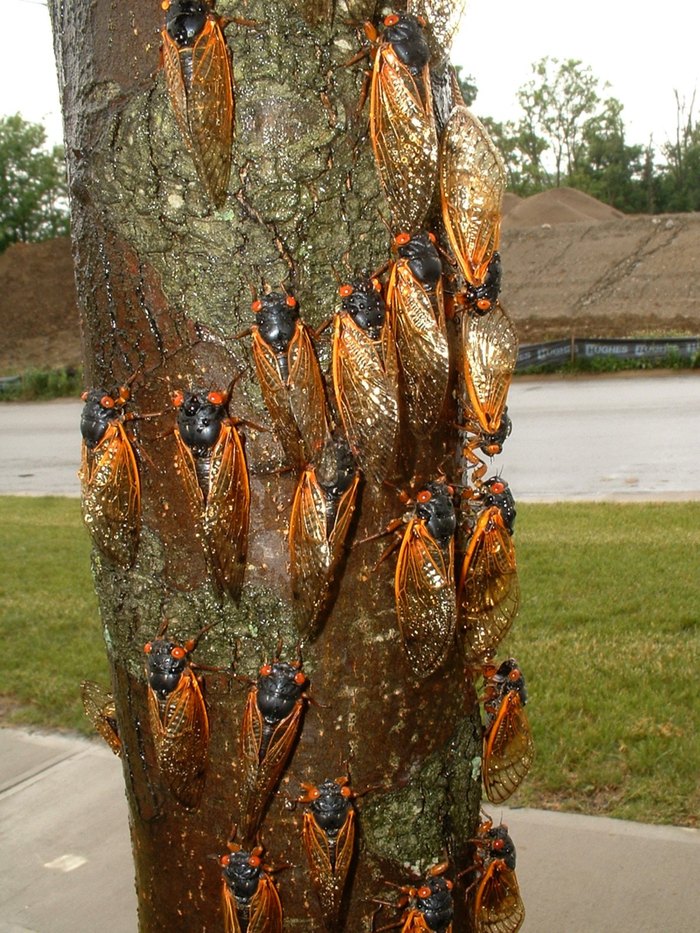You’ll want to make sure you have earplugs on the ready this spring when billions of cicadas will emerge in 16 eastern states, including North Carolina. This year marks the 17th year for the Brood X (that’s Brood 10) emergence, last seen topside back in the spring and summer of 2004. Brood X is the largest in mass of the 15 different broods of cicadas.
If you remember the sound cicadas make, then you know how significant the largest group of them in the world will be in terms of enjoying a quiet evening this spring or early summer.

Actually, they emerge from their resting spots deep within the earth for another reason. Seen here are several emergence holes found underneath a large, flat piece of flagstone in a previous emergence year.

The life cycle of Brood X is 17 years. Every 17 years, the entire brood climbs out of the earth in order to mate.

You may recall in 2004 (or a previous emergence of the cicada) a scene on a tree limb that looked something like this.

Once the nymphs emerge, they won’t waste any time finding a hole to burrow back down into the ground to begin their 17 year wait to rise again. (We’ll see you in 2038!)

The reason so many emerge at the same time each year is speculated to be survival of the species. No matter how many predators they have, it’s not likely the entire lot of billions of them will be wiped out all at once.

Most people don’t realize cicadas have five eyes.

How do you usually cope with the overwhelming sound the cicadas make when they emerge?
Have a great weekend!